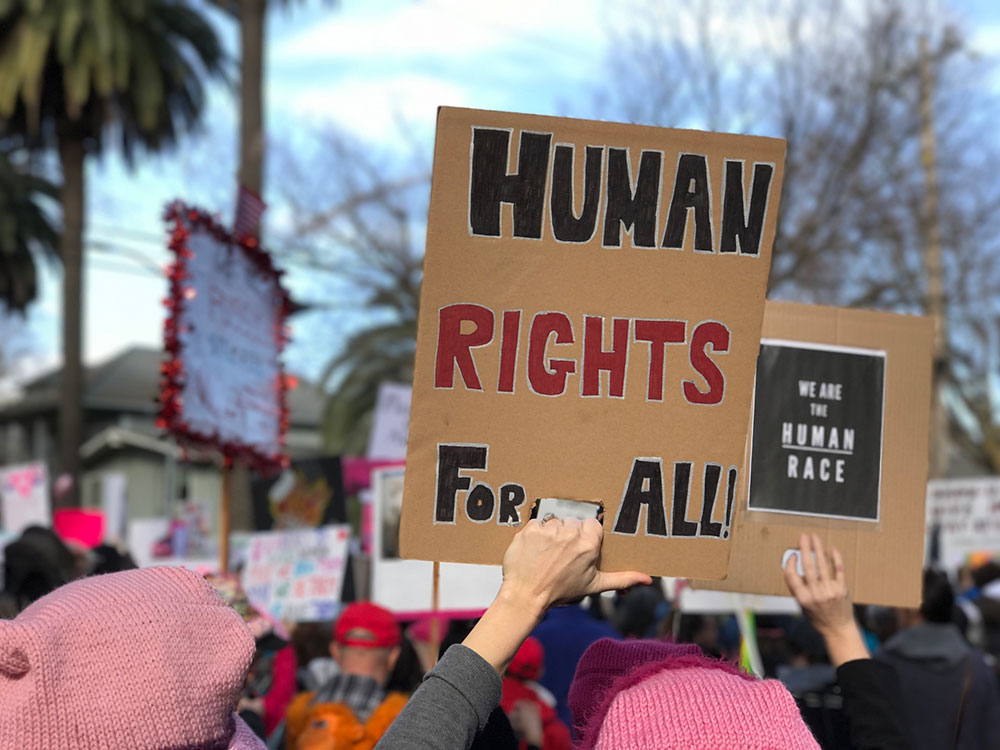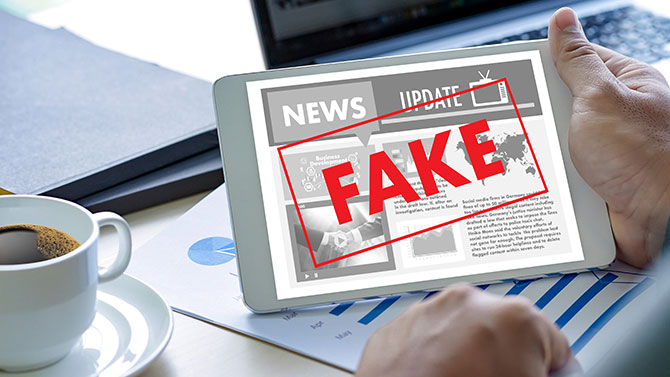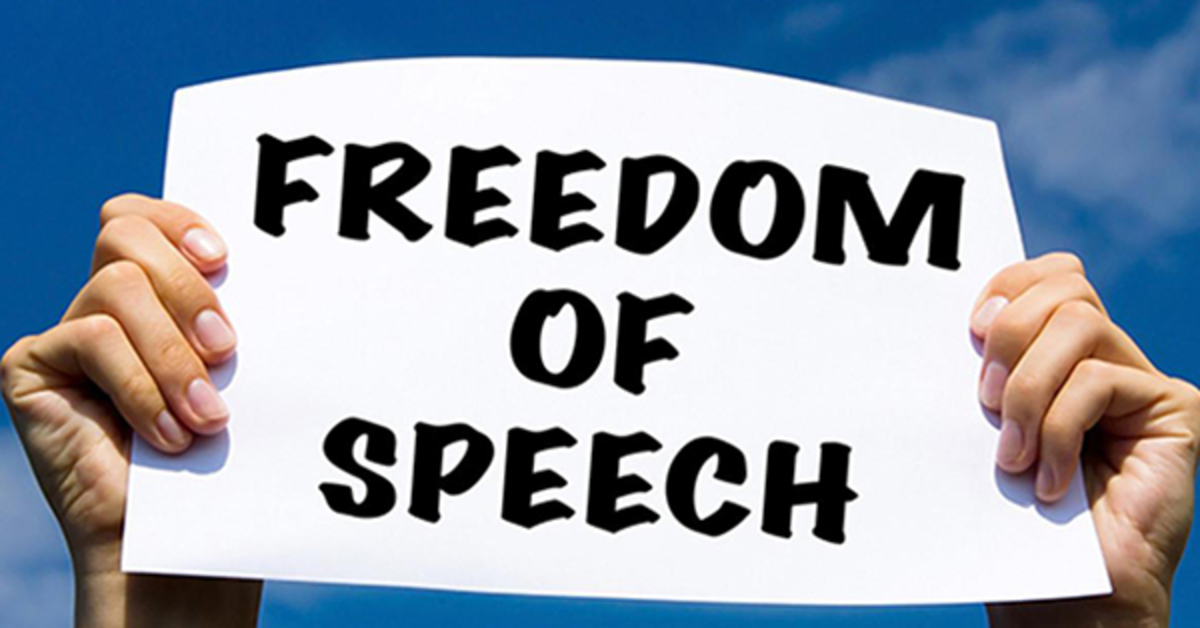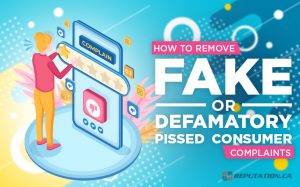Introduction:
The weaponization of fake speech in the form of fake news poses a serious threat to people’s reputations in a time when information spreads quickly and social media is the main arena for public debate.
The rapid spread of information via digital channels has dominated this period, and fake news has become a ubiquitous and powerful force. Fake speech, which involves purposeful lies meant to damage the reputation of people or organizations, is one of its many deceptive strategies. The question of whether phony speech concealed in fake news is protected by the First Amendment, even if it is intended to damage someone’s reputation, becomes vital as we consider the ramifications of this kind of dishonesty.

Recognizing False Statements in False News:

Fake speech in the context of fake news refers to a variety of dishonest strategies, such as made-up quotations, altered photos, and blatant lies that are reported as fact. These misrepresentations frequently target particular people or groups in an effort to discredit them, harm their reputations, or provoke outrage from the general public. The integrity of public debate and individual rights are seriously threatened by fake speech, regardless of whether it is used for financial gain, political benefit, or malevolent intent.
The protection that fake news affords to speech is not unrestricted, though. Although the First Amendment might protect some speech, it does not offer complete protection to speech that intentionally causes emotional distress, slander, or fraud. Courts have acknowledged that harm to one’s reputation can be a valid reason for pursuing legal action, especially when remarks are made falsely with the intention of misleading or hurting another person.

Defending First Amendment rights to free speech:
American democracy is based on the First Amendment’s safeguards of the press and fundamental rights to free expression. This fundamental protection ensures that people can express their opinions without worrying about censorship or retaliation from the state.
Equitable Treatment of Rights and Duties in Standards of Law:
The robust guarantee of free expression provided by the First Amendment is subject to numerous limitations. Courts have established legal rules, such as the “actual malice” threshold described in New York Times v. Sullivan (1964), to differentiate between protected speech and defamation.
Real Malice Criteria: A Strict Standard
Public figures are required to demonstrate that the defamatory comment was made with reckless disregard for the truth or with knowing that it was false in order to meet the actual malice requirement. This high standard is a reflection of the judiciary’s understanding of the value of free speech on public issues and the necessity of preserving unrestricted debate.

Individuals in Private: Lower Barrier:
When it comes to proving defamation, private individuals have a lower bar than public ones. They still have to show, though, that the false comment damaged their reputation and was said carelessly or intentionally, depending on the situation.
Context Is Important: Fact vs. Opinion:
When deciding whether or not fraudulent speech is protected by the First Amendment, courts take the circumstances of its dissemination into account. Statements presented as genuine news are usually given less leeway than opinions, satire, and parody.
Difficulties with Enforcement:
There are many obstacles to overcome when enforcing defamation laws in the setting of fake news, such as locating anonymous offenders, resolving jurisdictional disputes, and establishing the defendant’s mental condition.
Legal Action: Pursuing Justice:
In order to stop the spread of false information, people who have had their reputations damaged by fake speech in fake news may file defamation cases and seek damages as well as injunctive relief.
The Part Intent and Harm Play:
Courts may take into account a number of criteria when determining whether fake speech concealed in fake news is lawful, such as the speaker’s intention, the severity of the harm caused, and the public interest in revealing the truth. Though information that is satirical or parodic may have more freedom under the First Amendment, intentional attempts to mislead or slander are unlikely to be shielded.
Furthermore, the emergence of social media and internet platforms has made the terrain of bogus speech more complex, making it harder to distinguish between damaging misinformation and protected speech. Tech businesses are under growing pressure to maintain open dialogue and free expression while halting the spread of false information.
Conclusion:
While First Amendment protections may provide some protection for fake speech concealed in fake news, especially in the context of opinion and satire, such protection may not apply when the speech crosses the line into defamation or deliberate lies meant to damage someone’s reputation. Upholding free speech ideals and holding individuals who abuse this privilege to cause harm accountable are crucial as society struggles with the problems posed by false news. Maintaining the integrity of public discourse while safeguarding individual rights is a delicate balance that must be struck as we address the issues presented by fake speech in fake news. The First Amendment does not provide immunity for willful lies meant to damage someone’s reputation, even if it protects the freedom of expression and the press. We can cultivate a better informed and resilient society that can navigate the intricacies of the modern information ecosystem by holding false news producers accountable for their actions and encouraging media literacy and critical thinking abilities.
- All Posts
- Uncategorized

Dr. Daniel Davidson, MD, MBA Introduction: The goal of success for businesses nowadays is to establish a global brand because…

Dr. Daniel Davidson, MD, MBA Introduction: Stem cells have captivated the imagination of scientists and the public alike for their…

Dr. Daniel Davidson, MD, MBA Introduction: Platelet-rich plasma (PRP), fat grafting, and dermal fillers made from natural sources are examples…
